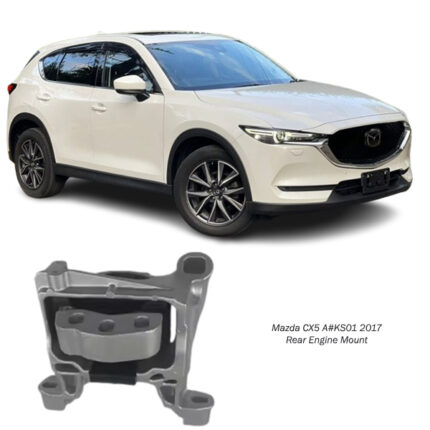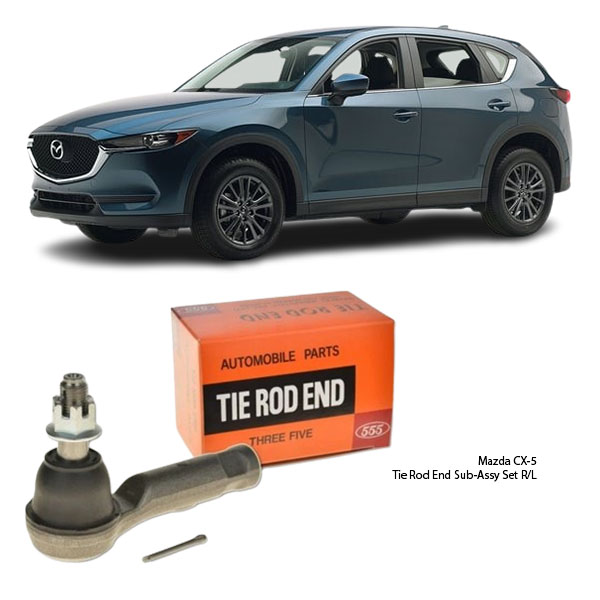-8%
Get Mazda CX-5 Tie Rod End Sub-Assy Set R/L SE-1861 in Kenya
When it comes to driving, there’s one part of your vehicle that’s absolutely essential to maintaining direction, control, and precision — the Tie Rod End Sub-Assembly Set, both Right (R) and Left (L). While not as famous as engine parts or brake systems, these components are true heroes in your car’s steering and suspension system. They help ensure that every twist of the steering wheel is smooth, responsive, and accurate.
In this guide, we’ll break down what the Tie Rod End Sub-Assy Set does, how it works, why it’s so important, and what signs might indicate it needs attention.
What Is the Tie Rod End Sub-Assy Set? 🤔
The Tie Rod End Sub-Assembly Set (R/L) refers to the right and left outer ends of the steering linkage system that connect the steering rack (or center link) to the steering knuckle. Think of it as the final connection between your steering wheel and your wheels.
Here’s what it typically includes:
-
Outer tie rod ends (right & left)
-
Threaded adjustment sleeves or joints for alignment
-
Protective rubber boots to keep out dust and debris
-
Grease fittings (in some designs) for lubrication 💦
Each tie rod end is a ball-and-socket joint, allowing the wheels to pivot as you steer, while also moving vertically with suspension travel. This means it has to be strong, flexible, and durable under constant movement and pressure. 🔁🛠️
Why Are Tie Rod Ends So Important? 🎯
The tie rod ends are the bridge between your steering rack and the wheels. Without them, the wheels wouldn’t turn when you steer — it’s as simple as that.
Their key functions include:
-
Transmitting steering input from the rack to the wheel
-
Maintaining proper wheel alignment
-
Absorbing bumps and shocks from road surfaces
-
Ensuring responsive, stable handling
When you turn your steering wheel, the motion is transferred via the rack-and-pinion or steering gearbox to the tie rods, which in turn pull or push the wheel hub, changing the direction of the tires.
How Do Tie Rod Ends Work? ⚙️
The steering system works like a chain of motion:
-
You turn the steering wheel.
-
The motion travels through the steering column to the steering rack.
-
The rack moves laterally, pushing or pulling the tie rods.
-
The tie rod ends move the steering knuckle, causing the wheels to turn.
The ball-and-socket joint design allows for both rotation and movement up and down, which is essential for steering and suspension to work together. The outer tie rod ends are threaded to allow for alignment adjustments, specifically for toe angle — how much the tires point inward or outward. 🔧📐
What Happens When Tie Rod Ends Wear Out? 🚨
Like all mechanical parts, tie rod ends wear out over time, especially with rough roads, potholes, or off-road driving. Once they start to deteriorate, it affects steering control, tire wear, and overall drivability.
Common signs of worn tie rod ends include:
-
Loose or shaky steering
-
Uneven or rapid tire wear
-
Clunking or knocking noise, especially over bumps
-
Vehicle pulls to one side
-
Steering wheel vibration, especially at speed
-
Poor wheel alignment or difficulty maintaining alignment
In worst-case scenarios, a severely worn tie rod end can separate completely, causing a loss of steering control — a serious safety hazard. ❌🚗
Benefits of Replacing with a New Tie Rod End Sub-Assy Set ✅
-
Restored Steering Precision 🎯
You’ll feel a noticeable improvement in how responsive and tight your steering becomes. -
Improved Vehicle Stability 🚘
Especially during turns and lane changes, your car will feel more planted and secure. -
Longer Tire Life 👟
Correct alignment from good tie rods prevents uneven tire wear and saves you money. -
Enhanced Safety 🛑
Stable, predictable steering keeps you in control — even in emergencies. -
Better Fuel Efficiency ⛽
Proper alignment reduces rolling resistance, helping your engine work less.
Tie Rod End: Left vs Right 🧭
While both ends perform the same function, they are mirror images of each other and fit specific sides of the vehicle. Installing the correct side (Right or Left) ensures proper geometry and alignment.
Most replacement kits include both sides to ensure uniform wear and optimal performance. It’s always a good idea to replace them in pairs to prevent imbalance or future repairs. 🔄👥
When Should You Replace Them? 🔁
It depends on your vehicle usage and road conditions, but here are general guidelines:
-
Every 80,000–150,000 km, depending on wear
-
If you experience any of the symptoms mentioned above
-
After a major suspension or steering impact (e.g., hitting a curb or pothole hard)
-
When doing a full steering or suspension overhaul
Mechanics usually check tie rods during routine services or wheel alignment jobs. If play or looseness is found, it’s time to replace.
What to Look for in a Quality Tie Rod End Assembly 🏅
-
Heavy-duty forged steel construction for strength
-
Corrosion-resistant coating for durability 🌧️
-
Precision-machined ball joints for smooth motion
-
High-quality rubber boots to prevent dirt and moisture intrusion
-
Exact fitment for your specific vehicle model
-
Greaseable design (optional) for longer life
Whether you’re choosing OEM or a high-quality aftermarket option, go for components that meet or exceed factory specifications.
Maintenance Tips for Long Life 🧰
-
Inspect regularly, especially during suspension checks
-
Keep the rubber boots intact — they’re vital for protecting the joint
-
Grease if required (for non-sealed types)
-
Avoid excessive curb impacts or potholes
-
Always realign your wheels after replacement to avoid abnormal tire wear
Conclusion: Small Part, Big Responsibility 🚗⚖️
The Tie Rod End Sub-Assy Set (R/L) may not be glamorous, but it’s absolutely essential to your vehicle’s control, stability, and safety. It connects your intentions (steering input) to your car’s actions (wheel direction) — and that’s no small job.
Replacing a worn set of tie rod ends brings your steering back to life. It ensures your car tracks straight, corners confidently, and keeps your tires in top condition. For such a small component, it plays a big role in your driving experience.
Follow us on Facebook for more parts.



